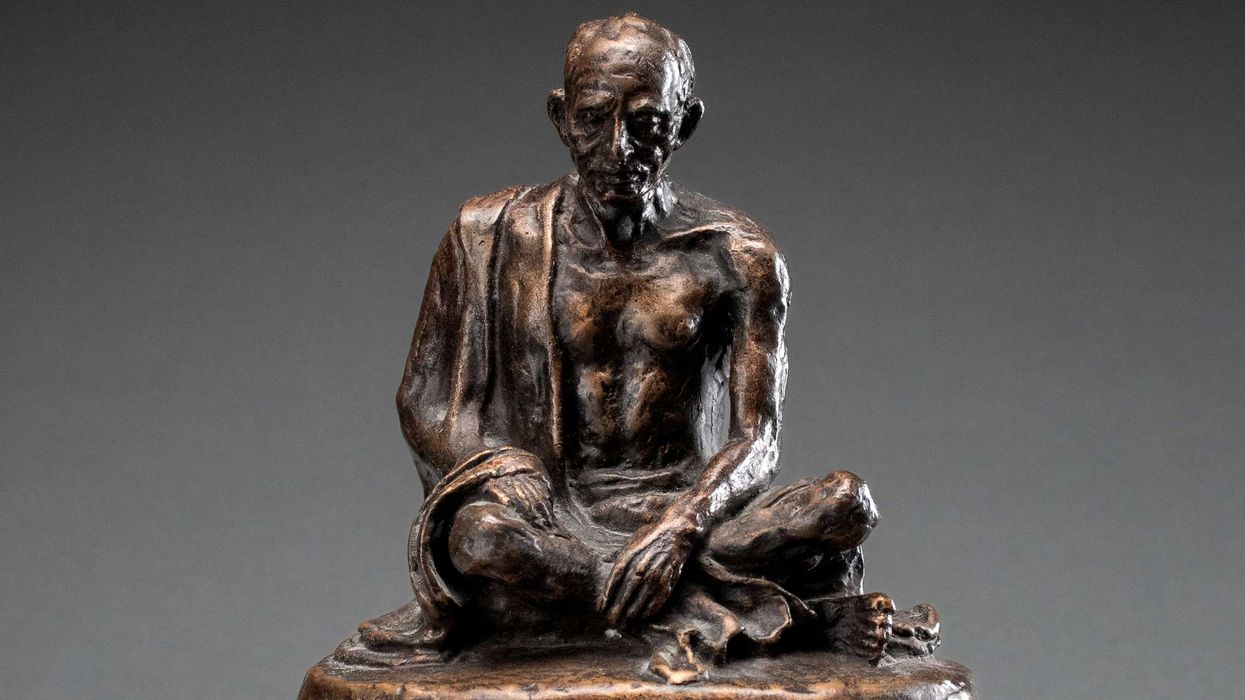THIS week marks the anniversary of legendary actress Sridevi’s death on February 24, 2018, at the age of 54.
It is also the week when her movie Himmatwala was released in 1983. The masala entertainer, which hit cinemas on February 25, became a blockbuster success and propelled Sridevi towards becoming the biggest pan-Indian film icon.
Eastern Eye decided to mark both occasions by finding 20 facts about the superstar-making Hindi film classic that gave rise to an unforgettable cinema giant who has left her mark on Bollywood.
1. Himmatwala was a remake of Telugu-language comedy Ooruki Monagadu (1981), and had the same director – K Raghavendra Rao.
2. The filmmaker had become successful in Telugu cinema during the 1970s and made his Bollywood debut with Jeetendra starrers Nishana (1981) and blockbuster hit Farz Aur Kanoon (1982). He would work with that actor and Sridevi in subsequent films including Justice Chaudhury (1983) and Tohfa (1984).

3. The film’s original title was Zabardasti when it was launched, but it was changed later on.
4. Rekha was the first choice to play the lead in Himmatwala and the character was even named after her. Jaya Prada, who had starred in the original Telugu version, was also considered. Sridevi eventually landed the role and took her first big step towards superstardom.
5. The actress had originally been signed by the same production house, Padmalaya, for a Telugu film that got shelved. The producers decided to use her dates for Himmatwala instead and it turned out to be a masterstroke.
6. After becoming a big name in Tamil and Telugu cinema, Sridevi had made an unsuccessful Bollywood debut with Solva Saawan (1979). She returned to Hindi cinema with Himmatwala four years later, and it turned her into an overnight super star. She immediately became the most in-demand leading lady.
7. Waheeda Rehman played Jeetendra’s mother despite only being four years older than him. In stark contrast, his love interest in the movie, Sridevi, was 21 years younger than him.
8. The superhit film started a successful partnership between the lead stars Jeetendra and Sridevi, which included a further three successful releases in 1983 – Jaani Dost, Justice Chaudhary and Mawaali. They would act opposite one another in 15 films within a few years.

9. The stand-out moment in the movie was the song Naino Mein Sapna, which became a rage. It was so popular that earthen pots similar to those featured in the song were placed outside cinema halls showing the film, while sales of similar colourfully designed pots rocketed. The late great Kishore Kumar had sung the song originally, and in the 2013 remake, those duties were given to his son Amit Kumar.
10. Despite being an accomplished dancer, Jeetendra admitted to being nervous performing songs with Sridevi. He said she got the dance steps straight away and helped him in rehearsals to get them right.
11. Sridevi had her dialogues dubbed by former child star Naaz because Hindi wasn’t her first language. It worked so well in Himmatwala that Naaz would become the voice of Sridevi throughout the 1980s in the star’s biggest blockbusters.
12. The eye-catching action scenes were choreographed by Veeru Devgan. Interestingly, his son Ajay Devgn would play the lead role in the 2013 remake.
13. Kader Khan had become a Bollywood villain but started a new phase as a massively successful comedy actor with Himmatwala because his negative roles would result in his son getting into fights. The multi-talented star also wrote unforgettable dialogues for the film.
14. Legendary Bollywood comedian Asrani acted in Himmatwala and then in the Hindi remake 30 years later.
15. Actress Swaroop Sampat played the hero’s sister in Himmatwala. Coincidentally, her actor husband Paresh Rawal took on the role originally played by Kader Khan in the unsuccessful 2013 remake.

16. There is a small supporting role by Arun Govil when he was a relatively unknown actor in the film. He would go onto become a huge TV icon with his role of Lord Rama in classic drama series Ramayana in the 80s.
17. The film was so popular that it successfully ran in some cinemas across India for nearly two years.
18. Years later, Sridevi admitted that she didn’t like Himmatwala being her big breakthrough movie because it typecast her into glamorous roles. She preferred more performance-driven projects like Sadma, which was released in the same year, but she was pushed towards being a pin-up, which didn’t allow her to fully showcase her acting talent.
19. A big reason why Sridevi became a sex symbol were her figure-hugging clothes and extreme close-ups of her body. One particularly tiny one-piece outfit showing her legs earned her the nickname ‘thunder thighs’. Many people flocked to cinemas just to get a glimpse of her legs.
20. Himmatwala is available to watch for free on YouTube. It has been viewed over six million times.






 Mareyah Bhatti , a sustainability strategist and passionate home cookMareyah Bhatti
Mareyah Bhatti , a sustainability strategist and passionate home cookMareyah Bhatti






